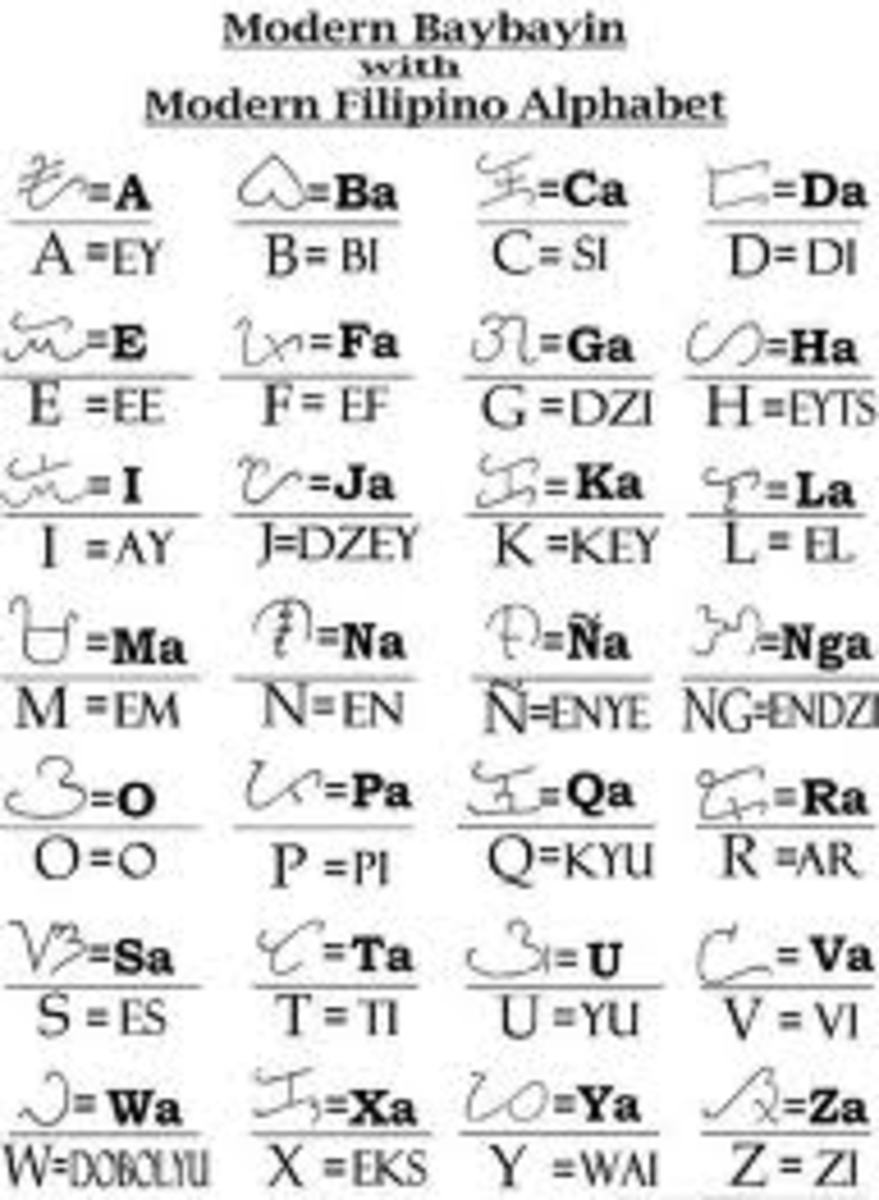Parent's Guide to the PYP

Hitchhiker's Guide to the PYP
Many of you might not have even heard of the PYP, other's might have heard your child's school start mentioning it and wonder just what exactly it is. Well, here's a guide I wrote for parents at our school as part of an information evening I held recently. At first the PYP was a curriculum framework used by many international schools. Lately, more and more state schools in the USA, Canada and Australia are adopting the PYP as well. So, here are a whole lot of questions you might have been too afraid to ask, and my answers. This is perhaps over-simplified, but hopefully it'll give you a better understanding of what it's all about and where it comes from when you get a letter from your child's school saying that they are considering the PYP.
What does the PYP stand for?
No, It does not mean ‘Pass your Pillow’ or ‘Positively Yummy Pasta’!
PYP stands for Primary Years Programme. It is an international curriculum model and teaching methodology for children aged 3-12 years. It was formulated by the IBO, and is followed by the MYP (Middle Years Programme) and later by the DP (Diploma Programme).
What is so special about the PYP?
The PYP focuses on the development of the whole child, and provides a framework that can meet a child’s academic, social, physical, emotional and cultural needs. It is inquiry based and lends itself to being integrated across the curriculum. Students take ownership of their learning and develop skills and attitudes to help prepare them for life in a global world. The PYP also caters for all the different kinds of learners you get in the classroom. There is literally something for everybody. The PYP also tends to let students get a deeper understanding of the topic. The PYP is great! Once you’re child has experienced it, there’s no turning back. Be warned!
Who or what is the IBO?
IBO stands for International Baccalaureate Organization. It is a non-profit education foundation with its headquarters in GenevaSwitzerland. The IBO offers a continuum of education for children aged 3-19 years, through its 3 programmes – the Primary Years Programme, Middle Years Programme and Diploma Programme. The focus is on developing international-mindedness and a positive attitude towards learning. Most international schools offer one or more of the IBO Programmes. The IBO keep a close watch on their programmes, and schools have to go through a strict authorization process, that takes a few years, before they are authorized to offer one of the IB Programmes, or advertise themselves as an IB WorldSchool.
Why do the IBO take so long to authorize schools?
The authorization process takes from 2-3 years and is very intensive. Schools have to complete very detailed application forms and provide all kinds of information to show that they are providing excellence in education, have organized systems in place, and the money to provide for on-going staff training and to buy the resources needed for the different IBO Programmes. In addition, the IBO will send representatives for a Pre-authorization visit and will provide help and support while schools are undergoing their candidate status, on the road to authorization. Schools have to implement the programme for at least one year before they can move onto the next stage of the authorization process. As you can see, not just any school can become an IBOWorldSchool and be authorized to offer one or more of their programmes. The IBO also does follow up Post-authorization visits to the schools, the first visit being 3 years after authorization and thereafter, every 5 years. During those visits, the IBO evaluate their programmes in the school and schools also have to complete a self-study.
What makes a school an InternationalSchool?
This is a tough question, because there are schools in the world that refer to themselves as international schools, but their student body is anything but international. Roughly, an international school is one that meets all or most of the following criteria:
International Curriculum
Multi-national Staff
Students from different countries and cultures
Good ESOL support for students
Focus on each student as an individual learner
A desire to nurture confident, open-minded, independently thinking, well-balanced inquirers for global responsibility.
Now that my child is in a PYP School, what does that mean to me?
What it means, is that your child is now on an exciting voyage to a whole new world! More and more international schools around the world are beginning to offer the PYP. In addition, some state schools in countries like New Zealand, Australia and the USA are also beginning to implement the PYP. The experience your child will get in a PYP School, will enable them to experience personal growth as they begin to model the skills, attitudes and profile that we want the students to develop! They will be on the road to becoming a World Citizen. Isn’t that exciting?
Integrated? Hasn’t that been happening for years?
Not really. There is a big difference between an integrated unit of inquiry and a thematic approach. Most of us have experienced being taught thematically and believed that teachers were integrating the curriculum. Most schools and state education systems moved away from the old fragmented style of teaching years ago. You know, the kind where teachers taught area in a maths lesson, then the bell rang and they taught about how the country was colonized in social studies, then the bell rang and they taught magnetism in science, and so on. There was no connection between curriculum areas. Then everybody went for the thematic approach, where they chose a theme, or the school chose a school-wide theme, and for their planning they drew a mind-map with all the curriculum areas, and brainstormed what activities they could do which relates to the chosen theme in all the curriculum areas. Many of the activities they chose were fun-based and often only tenuously linked to the theme. No inquiry took place and the students only learnt surface facts, but never really got a deeper understanding of the topic.
What is a Programme of Inquiry?
The Programme of Inquiry for each school shows all the Units of Inquiry that each year level will cover during the year. It is designed to enable teachers to guide students through the five essential elements of learning:
- Understanding of concepts
- The acquisition of knowledge
- The mastering of skills
- The development of attitudes
- The decision to take responsible action
Staff plan together to produce the Programme of Inquiry, which is 50% of the curriculum and transdiciplinary. Each class has six units which are planned following the organising (transdiciplinary themes) and Preschool and Kindergarten choose 4 units for the year.
The transdisciplinary themes are
- Who we are
- Where we are in time and place
- How the world works
- How we express ourselves
- How we organise ourselves
- Sharing the planet.
The Programme of Inquiry is reviewed every four years and some units can be changed for the next year.
What is a Unit of Inquiry?
A Unit of Inquiry is based on one of the six transdisciplinary themes which are outlined in the school’s Programme of Inquiry. Basically, a Unit of Inquiry should:
- be a significant, relevant & challenging learning experience
- build on the prior knowledge of the students
- involve students in a range of learning activities
- require students to engage in positive action
- integrate diverse subject areas whenever meaningful and appropriate
- incorporate different assessment tools for the learning activities
- stimulate further inquiry
Through the Units of Inquiry, the classroom will become a centre of structured inquiry through which students acquire and practice skills and build new knowledge. The Units of Inquiry are designed to build from one year to the next, as a student progresses through the school. The Units of Inquiry are planned on the set unit plan format given by the IBO.
Why do we need to use the same framework as other schools?
Why reinvent the wheel? The IBO spent many years researching and trialing the framework. Having the same framework as other schools offering the PYP, makes it easier for the IBO to monitor the education programmes in the schools, and to ensure that what is being offered at the schools is of a high standard. Using the same framework is what makes this an ‘International Curriculum Framework’. You know that if a child moves from one international school to another offering the PYP, that the child will encounter the same transdisciplinary themes and focus on developing the same student profile, skills and attitudes. The actual units of inquiry might be different, but the end goal remains the same. In the world we live in, there are more and more people leading increasingly global lives and moving from one country to another. Keeping the same framework as other schools, ensures consistency.
What is all this stuff about Concepts?
The Concepts are nothing more than ‘Big Ideas’. The curriculum framework has been structured around these ‘Big Ideas’. The PYP is structured around 8 key concepts which is what drives the inquiry. They are not the only concepts around, there are others, but these ones have been identified as the major concepts. The 8 Concepts are: Form, Function, Causation, Change, Connection, Perspective, Responsibility, Reflection. They are in the unit planner in the teacher question section. You might be asking, “How do teachers use these concepts to drive my inquiry?” They base their open-ended teacher questions on the concepts. This forms an awesome research tool for the inquiry.
Form – What is it like?
Function – How does it work?
Causation – Why is it like it is?
Change – How is it changing?
Connection – How is it connected to other things?
Perspective – What are the points of view?
Responsibility – What is our responsibility?
Reflection – How do we know?
Why do you say knowledge is only part of it? Didn’t you become a teacher to impart facts?
The PYP is all about developing and educating the whole child. Knowledge is important, there is no doubt about that. But what is knowledge, if you can’t apply it? If you think back to your childhood, teachers weren’t only imparting knowledge, they were also teaching social skills, communication skills and a whole lot of other skills and attitudes that were just a part and parcel of their average teaching day. The PYP is just focusing on specific skills and attitudes that students need to develop to achieve the student profile.
How important is the Student/Learner Profile to the PYP?
The Student or Learner Profile is central to the work of the PYP. It is the end goal, what we are wanting, not only our students, but us to become. So, it is important for the Student profile to be displayed in every class, and for the students to become familiar with the terminology used, and to understand the qualities and values they need to develop. The profile places the focus on the student’s learning. Can you imagine what a difference to the world our students will make, if they leave our school having achieved this profile? In the PYP Student profile, students are:
Inquirers, Thinkers, Communicators, Risk-takers, Knowledgeable, Principled, Caring, Open-minded, Balanced and Reflective.
Why do teachers have to work on the student’s Attitudes? Isn’t that the parents’ job?
Educating a child is a team effort. The parents will work on developing their child’s attitudes, and as we are in the business of educating the whole child, we’ll also work on developing our students’ attitudes. The children spend a good part of their waking day with us, and if we don’t try to foster positive attitudes in them, our teaching day may become quite unpleasant. It is our role to design activities which will promote positive attitudes. The Attitudes the PYP focuses on are:
Appreciation, Commitment, Confidence, Cooperation, Creativity, Curiosity, Empathy, Enthusiasm, Independence, Integrity, Respect and Tolerance.
How do teachers assess the inquiry?
It is important to set assessment tasks that can be easily managed and easily recorded. Sometimes, the students might go off on a tangent that lends itself to assessment. Teachers are open-minded and flexible and not scared to assess something which happens spontaneously.
If teachers are clear on what they want their students to accomplish by the end of the unit, then assessing the inquiry will be quite simple. Teachers space their assessment tasks out throughout the unit, so that the data they gather will indicate progress and learning. Different assessment recording methods are:
Photographic records – these can be used to record the whole process students go through on a particular activity.
Rubrics – these clearly state the criteria and expectations.
Checklist – these can be highlighted when they achieve certain skills, behaviours or knowledge.
Tests – devised by the teacher and can be oral or written.
Self-assessment – this allows the student to reflect on their own learning.
Group assessments – usually works best with a rubric.
Peer assessments – can also be used with a rubric or checklist.
Work samples – teacher writes short notes about the student’s progress as shown by that particular work sample.
Video or Audio Recording – this can then be assessed using a rubric by the student themselves, their peers or the teacher.
Student portfolio – decide with the student what work will go into the portfolio.
Anecdotal records – These are particular good to use when you are observing your students at work at any given task, and a really easy way to record an unplanned assessment opportunity.
Class charts – like the KWL
Student designed tests
Surveys
Developmental continuums – Teachers can plot a student’s progress over time
What is a student portfolio?
A student portfolio is a collection of annotated work samples, self-assessments, reflections, and other assessment records, that provides an in-depth look at a particular student’s progress and development over a period of time. Each school has their own guidelines for what goes into a student portfolio, and some schools even have set formats.
How do teachers get the students hooked on the topic?
Some teachers call this stage ‘Wondering and Wandering.’ Others refer to it as ‘Tuning in.’ (Murdoch, 1998). Whatever you want to call it, this is the time to set the mood, spark the flame that will ignite into a burning desire to find out all the answers. This stage is important, as if you don’t get the student’s interested in the unit of inquiry, not much will happen further on. If they have many ESL students in their class, teachers will spend some time building up the vocabulary required for the unit of inquiry. This could be through doing word searches, crossword puzzles, comprehension tests, cloze procedures, or any other vocabulary building activity they can lay their hands on.
Some other strategies for getting students hooked on the topic, are:
Brainstorming
Associated word lists
Card games using the vocabulary from the unit
Mind mapping
20 Questions – where students have to guess something
Role play – interviewing each other about the topic
Magic Ball – pass a ball around the class, and when a student catches the ball, they have to say something about the topic
Bingo
Sequencing pictures abou the topic
Cloze procedure
Post-a-question box, where students post their questions into a special post box
Question of the day, choose an open-ended question that students have to think about or write about all day.
Jigsaw puzzle – cut up pictures to do with the topic, and students have to put them together again.
KWL
Topic wheels
Visual representations – drawings, diagrams, paintings
Pass the Question – Write a question on a piece of paper, pass it around the class. Each student writes down their answer, and then folds the paper so the next student can only see the question. When everybody has had a turn to answer the question, read out the answers.
Guest speakers
Watch videos about the topic
Students make a background to display their work on.
Shared reading.
Interest table.
How do teachers get them to find out the information?
This is where children need to learn by doing, observing, speaking, listening and writing. Teachers provide the resources, the students find the information.
Living examples – if the unit is about plants or animals, they try and have the real living things in your classroom.
Bring in an expert to give a talk. Students can work out before hand what questions they might like to ask.
No ready expert handy in our area, use Skype to phone an expert through your computer.
Class trips
Experiments
Watch videos about the topic
Conduct interviews and surveys
Write letters to organizations and companies, or important people related to your topic.
Collect newspaper and magazine articles about the topic.
Find visual images about the topic
Fiction and non-fiction books to do with the topic
Observations
Internet www.askjeeves.com can answer all questions.
It sounds like teachers are just a spare part. What’s their role in the classroom?
There will still be times when teachers will teach, but often they will be there as the ‘oracle of all knowledge’, the ‘provider of resources’ and the spoilsport “Pack up, it’s time to go home now.” It’s true, teachers will facilitate more than in the past, but they will also get more opportunities to observe their students as they go through the learning process. They will be able to make anecdotal notes and complete checklists. Teachers will even find themselves learning more about the topic, and developing a deeper understanding of the world in which we live.
Now they have the information, what can they do with it?
In the past, we used to think that this would be the end of the unit. The aim was to gather information and collect data, now that’s been done, so it’s all over and time to move on. Well, there is a little surprise for you, this is where it all begins. Students have to apply the data and information they’ve gathered and present it in different ways. This is where teachers can get quite creative, as presenting data is not only done in written form. Teachers have various ways in which their students can make sense of what they’ve learnt and explore their experiences. That way, teachers are able to cater for all the different learning styles. Here are some ideas teachers use:
Debates
Role-plays
Puppet-plays
Free movement
Talk shows/TV Shows
Simulation using props
Mixed media collage
Diorama
Models/Construction
Art work
Make a video
Classifying
Graphs
Maps
Design maths problems using data
Timelines
Venn diagrams
Write your own lyrics to a popular song
Create a Rap song
Compose sounds or music to show your feelings
Writing
Data charts
Design a poster
Build a story
Comparison charts
Oral presentation
Cartoon strips
Written conversations
Wall stories
Design a booklet
Poetry
Make who/what am I puzzle cards
Research Project
Photo journal
Powerpoint presentation
What happens if my child wants to research their own questions?
Crack open the champagne, bring on the caviar and strawberries dipped in the best Swiss chocolate! That is where we are aiming towards, and if our students are wanting to do that, then we have developed independence, commitment and a whole range of other skills and attitudes in our students.
You do need to check, that their questions are related to the topic and inquiry. It’s okay if they go off on a tangent, but you don’t want them to go off the topic. That is part of your role if this is happening at home, to gently keep them on track and on the topic.
How do schools come up with the resources needed for the inquiry?
Most schools usually have a resource teacher who’ll provide them with the resources needed, or the PYP Coordinator will have a handle on the resources. However, it is always good to source out new resources, and the internet is one of the marvels of the modern era. With a few clicks of the mouse, you can access information you never knew was there, and we can create our own books if our school is low on resources. Alternatively, we can ask parents of the students in our classes if they know anything about the new unit of inquiry. We might have some experts on the topic in our parent body!
What is meant by taking action?
Taking action is a vital part of the unit, as it demonstrates to students the relevance and purpose of what they’ve been investigating in the inquiry. It’s all about putting back into the community what you got out of it and helping to make the world a better place.
It’s a good idea to pose some questions to your child, so that they can come up with suggestions of things they can do to take action. Too often, we think of ‘wonderful’ ideas that aren’t actually age appropriate and are not within their students’ capabilities. Don’t underestimate your child, they can come up with wonderful ideas!
So, what kinds of activities can your child do to demonstrate that they are taking action?
They can put posters around the school, hand out pamphlets or write an article for the school newsletter to advertise their ‘cause’.
They can turn the classroom into an exhibition and invite the other classes to come inside and take a look.
They can display their art work or posters in the local library or supermarket noticeboard.
For environmental topics, they can design a walk and activity sheet for other classes in the school to do.
Brainstorm and write an action plan.
Letter writing protesting or offering support.
Use the internet to join global organizations connected to their topic.
Contact a local newspaper and get them to do an article on the inquiry and what they found out.
Create a magazine or book about their topic to be kept in the school library.
Raise funds to donate to their cause.
Sponsor a child in a third world country.
Make signs around the school.
Make a personal pledge that is framed.
Why do we get our students to reflect?
Reflection helps students to assess their work and themselves and helps them to develop a greater understanding of the unit content and the actual inquiry itself. It also helps the teacher, by providing feedback about what worked well in the unit and what didn’t work at all.
Some ideas for reflection activities are:
Design a self-assessment worksheet, which has space for student’s reflections – what they enjoyed and were good at, what they didn’t enjoy, what they can do better next time, etc.
Group displays where they share what they’ve learnt with other groups.
News ring/circle on the mat.
Class meeting to discuss the unit, and students take turns to take minutes.
Class diary or learning log.
Pie charts
Reflection worksheets
Won’t the other core subjects get neglected if we just focus on the unit of inquiry?
No, they won’t. Maths and English can continue as stand alone subjects when you cannot integrate them
What can I do at home if my child is an ESL student?
Make sure that you spend some time during the tuning in stage of the unit, building up their vocabulary of common words that’ll crop up in the unit.
Make a wall display in their bedroom of photos/pictures and the associated vocabulary.
Find books about the topic that have a lower reading age.
Let your ESL child write down their ideas in their home language, and get it translated.
Go to www.babelfish.altavista.com and use the online translator.
References
1. Gardner, H 1983, Frames of mind: The Theory of Multiple Intelligences, Basic Books, New York.
2. International Baccalaureate Organisation 2000, Making the PYP happen, IBO Publications, Geneva.
3. Murdoch, K 1998, Classroom Connections: Strategies for Integrated learning, Eleanor Curtain Publishing, South Yarra.
4. Murdoch, K & Hornsby, D 1997, Planning Curriculum Connections, Eleanor Curtain Publishing, South Yarra.
5. Wilson, J & Wing Jan, L 2003, Focus on Inquiry, Curriculum Corporation, Carlton









